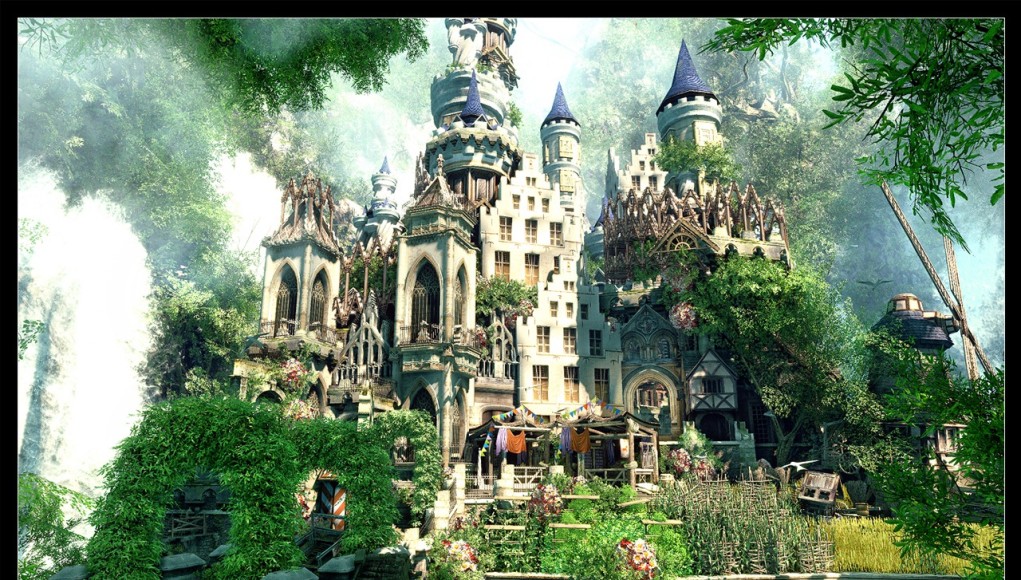Finn Meinert Matthiesen
Age: 29
Job: Mid-Senior Environment Artist at Crytek
Country: Lübeck, Germany
Web site: Behance
Deviantart
CGsociety
3DA: Let’s talk about you, Finn…
FM: My name is Finn Meinert Matthiesen, I’m 29 years old and from the beautiful city of Lübeck in northern Germany. Before joining the industry, I studied fine arts and communications design – but, since I always had a passion for video game design, I also worked on various game and so called “mod” projects back at that time.
Although I started to work in the traditional architecture visualisation, my heart was always beating for virtual realtime environments. Fortunately I received a job offer by Crytek a few years ago, after releasing some images of a portfolio piece that I worked on. So I’m currently working for Crytek for almost three years right now as a Mid-Senior Environment Artist and I still really appreciate it.
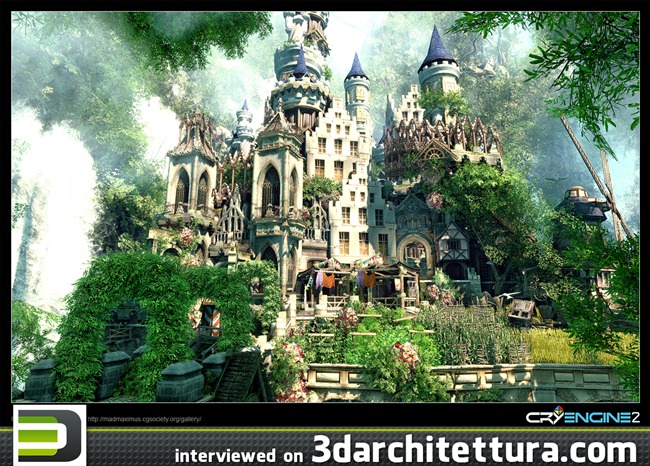
3DA: Which are your main tasks in Crytek?
FM: As an environment artist, I’m responsible to plan and develope virtual scenes for our games. Because of the complex development pipeline of a video game level or mission, I have to work together with other departments very closely, like level design, game design and concept art. Since every studio deals with this job position a bit different, I’m really happy how it’s interpreted over here at Crytek.
In general, I’m still a 3D artist, responsible for creating high poly and low poly geometry and texture and material work, but all 3d artists are placed in different job roles, like character art, lighting art, prop art (which highly overlaps with environment art) and – of course – environment art. Depending on individual strengths and interests, 3D artists fill in those positions, that suit them best. It’s sometimes really difficult to seperate these areas, since the whole creative working process is very organic, leading to situations where I, as a environment artist, end up creating statues for example, that are – in theory – more of a character artists responsibility.
Still, it’s exactly this kind of flexibility and freedom that makes this job so enjoyable. Also concept artists support and develope solutions in cooperation with 3D artists – they don’t just “dictate” how 3d assets should look like in terms of composition and mood like it happens in some other companies.
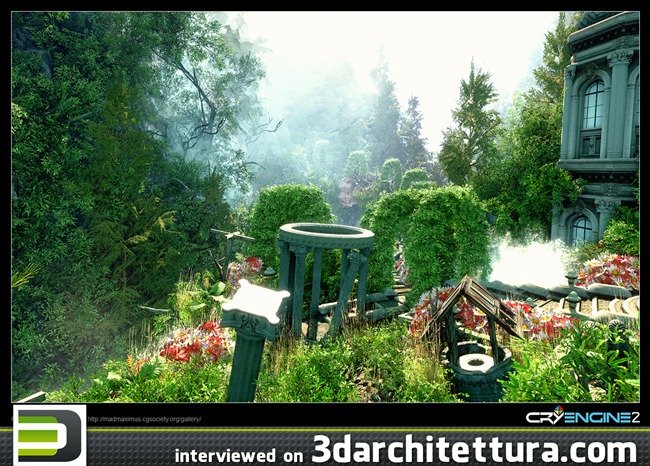
3DA: Was the passion for videogame born before than the one for 3D or vice versa?
FM: Since I’m a child of the 80s, I’ve to admit that video games have been a passion for me even before I was aware, that something like 3D art exists. Still, even back at that time video games inspired me in a huge way, which actually brought me to the point of creating my first small games or developing levels and visuals for other games (if I was able to grab editing tools for them).
In the early 90s I started to create tons of levels and graphics for games like Wolfenstein, Doom I + II, Heretic or Hexen. You might could consider this as the start of my love for creating 3d environments, although it’s not really adequate to compare those early, so called 2,5D games, with nowadays 3d technology. Later on, I started to create environments for Duke Nukem 3D, Shadow Warrior and Quake (which was – at least in the general perception of the community – the first “real” 3D game at that time, although polygon based assets have been used earlier, for example in the driving game Stunts 4D or a lot of flight simulations).
Still, from an art point of view, those games didn’t inspire me as much as games from other genres, especially the Monkey Island adventures, Another World (also known as Out of this World) or the first Syndicate.
My first experience with a real 3D-application (3D Studio Max), besides the worldcraft editor for the Quake engine games, was at the time, when the popular game Halflife was released.
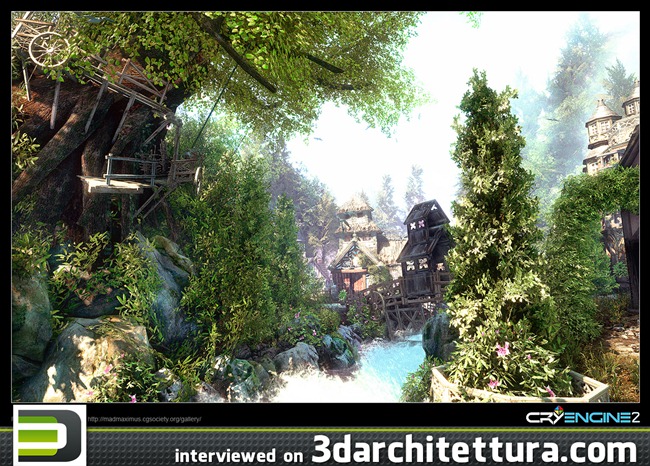
3DA: In your professional opinion, which are your favourite videogames and why?
FM: A difficult question, because I clearly have to separate those games from an artistic and a game design perspective – and I probably forget to mention plenty of good games I played in the past.
Art wise and gameplay wise, I like to mention the Monkey Island series again (the first two parts). Especially these two games had a huge impact on how I experienced the medium of a video game. I still think of those games as the most beautiful and fascinating games I ever played. Gameplay wise I like to mention the Fallout and Baldur’s Gate series as well as the Heroes of Might and Magic and The Kings Bounty games. Besides that, I should also mention the Halflife and Portal series as well as the Diablo, Warcraft and Starcraft games (although I totally suck at Starcraft). And yes, I admit – I love Plants versus Zombies – gameplay and art wise, although it’s done in 2D!
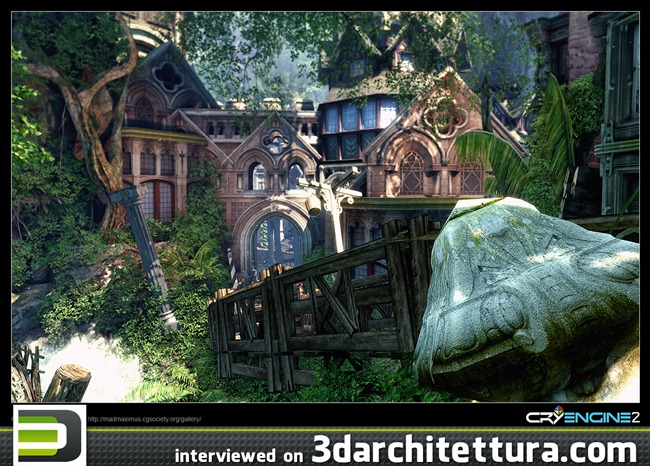
3DA: Videogame development: tell us a couple of positive adjectives and a couple of negative adjectives (if any)
FM: I guess it’s pretty similar to other creative work environments, where economical management ideals and office politics meet creative working pipelines. It also depends a lot on the specific company as well, which makes it pretty difficult to judge the whole industry branch.
According to people and colleagues, who worked in the movie industry before for example, the circumstances ,that come with the job, are often very similar.
It is, like every other creative business out there, not very family friendly in terms of safety – but which job is safe nowadays, even if you are got at it? And it’s a job, where personal passion is very important and the ability to keep it, even if times are difficult. It’s definitely not an eight hour office job, where you’re always home at 17:00.
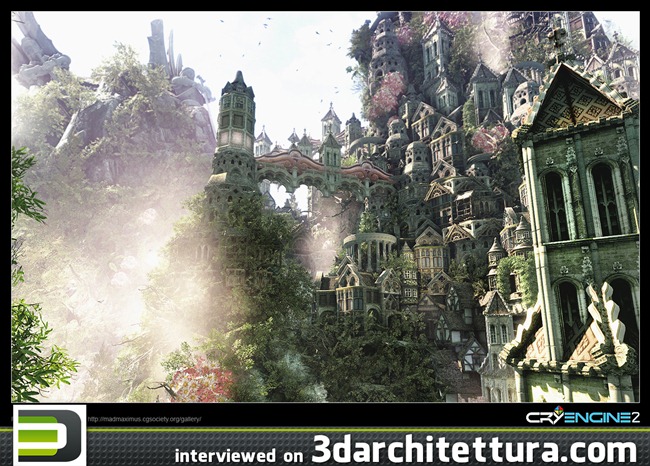
3DA: Do you also work in architecture/design previz or the videogame field is your full time job?
FM: To be honest, although I love architecture and still appreciate outstanding artworks in the traditional architecture rendering area, I focus on creating videogame art at the moment.
Job wise, as already mentioned before, I work full time in the games industry for the german company Crytek, which is popular for its Crysis games and its first released title Far Cry.
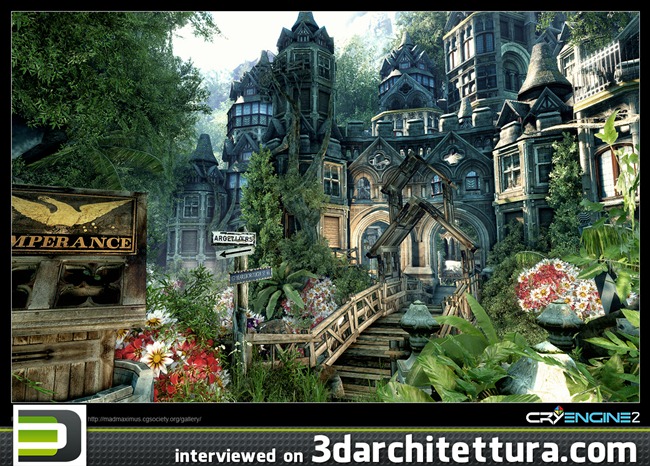
3DA: Often, who’s working in architecture field is not interested in videogame development and considers less professional this kind of approach to 3D. What do you think about this?
FM: Seriously? I worked in both areas and never received any negative opinions like that from the people I worked with, regardless if those worked in the architecture or previs area or in the video game industry. And I especially don’t expect this attitude that often nowadays, where realtime 3D is getting very close to rendered visuals.
What I can imagine is, that the video game medium is not interesting for all 3D artists out there, which is something, I can fully understand. An architect for example might love the possibility of visualizing his visions with the techniques of rendering, while not being interested in consuming video games, respectively not being interested in designing 3d assets for games. A professional 3d artist still is aware of the fact, that – from a “skill” point of view – the requirements for 3d artists in the video game branch are not that much different – and especially not lower, because they have other complex situations to find solutions for that are not showing up in the traditional rendering area.
It’s the same for me and other 3D artists the other way around. After a couple of years, I noticed, that architecture visualisation was too boring for me and not really satisfying from a creative point of view. Working in the games industry is – so far – way more creative and interesting. In my opinion, all job fields come with their unique circumstances and it really depends on the artist which area he or she prefers.
As I wrote, from a technical point of view, the differences – especially skill wise – are not really there in my opinion. All job fields require the ability to imagine and create complex 3D structures and set them up in the best way possible, based on the given options and conditions.
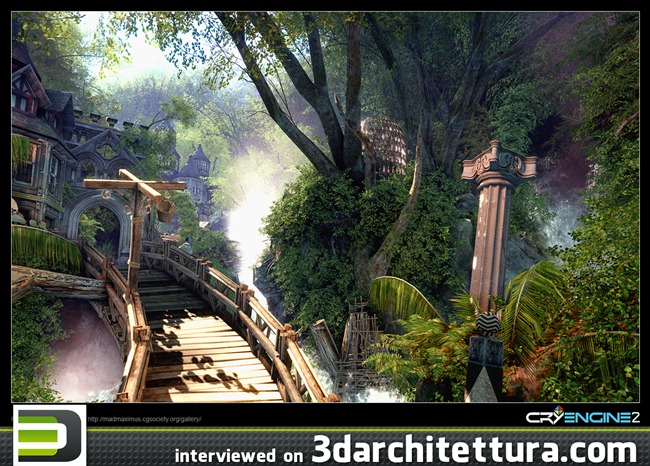
3DA: What kind of studies did you do? And what would you suggest to the people that are approaching to 3D field expecially for videogame development?
FM: As I mentioned above, I studied traditional communications design with the main focus on illustration and 3d design and I also worked on private projects as well.
In my opinion, understanding traditional art, composition, light, color and painting techniques is something, which is very important for artists in general.
My favourite painters are still Carl Spitzweg, Caspar David Friedrich and Rembrandt. Based on my experiences, learning from traditional art is very helpful when planning and creating 3d environments for video games.
And finally, even if people already study an art related subject, it’s absolutely necessary to work on own portfolio pieces to have the chance to get a job in the prefered area.

 Russian
Russian
















